Out of over 100 known species and subspecies of eagles, very few can compete with the amazing Harpy eagle in size, weight, and stunning beauty. It almost looks like the magical Fawkes, Dumbledore’s phoenix in Harry Potter, but even Fawkes would have a lot to make up for in sheer majesty.
Found mostly in Brazil, deep in the Amazon forest, the Harpy eagle has a range stretching from Mexico through some parts of Central America and deep into South America, as far as Argentina. [1] The species is regarded as the world’s largest extant bird, although the global population is massively decreasing. It is listed as “near-threatened” on the IUCN red list and if you key in some particular Brazilian regions, the bird is now totally extinct. [2]
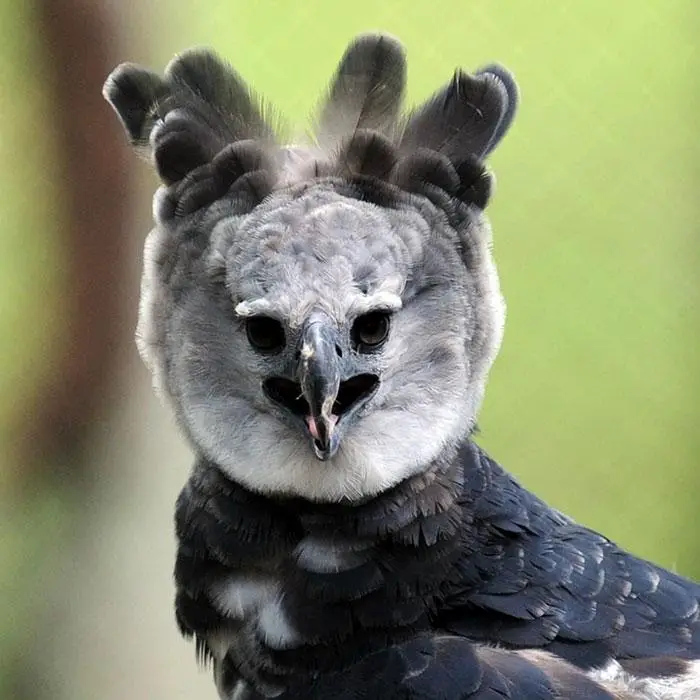
The Harpy eagle is unique for its size and exceptionally striking facial features. With black and grey color tones, questioning eyes, and talons bigger than a grizzly bear’s claws, an adult Harpy eagle can grow as big as 3 ft. 5 inches (104cm). They have a wingspan often ranging from 5 ft. 9 inches (175cm) to 7 ft. 4 inches (223cm), and they look like majestic humans during flight.
The female Harpy eagle is often larger and weighs more than the male. A normal female could weigh about 13 to 20 pounds, while males usually weigh 9 to 13 pounds. Besides the weight and size difference, the males and females look exactly the same. The Harpy eagle has a few standing feathers on its head that complete the terrifyingly quizzical yet regal appearance.
On top of the food chain

The Harpy eagle makes its home in the tallest tree canopies in the jungle. This is why they are so difficult to find and researchers are unable to estimate the current numbers in the wild. They prefer to live in lowland tropical rainforests and build their nests with sticks, branches, and animal fur. The nests can be so large that small humans would fit in.
Due to the unusual size and remarkable strength, the Harpy eagle is at the top of its food chain; only a few animals would dare to hunt such a majestic predator. A Harpy eagle’s diet consists of sloths, monkeys, squirrels, snakes, and other small animals. [3] They are not your regular seed-eating, fruit-loving, nut-cracking birds. They are fully carnivorous creatures that do not fly long distances to conserve energy for lifting heavy prey.
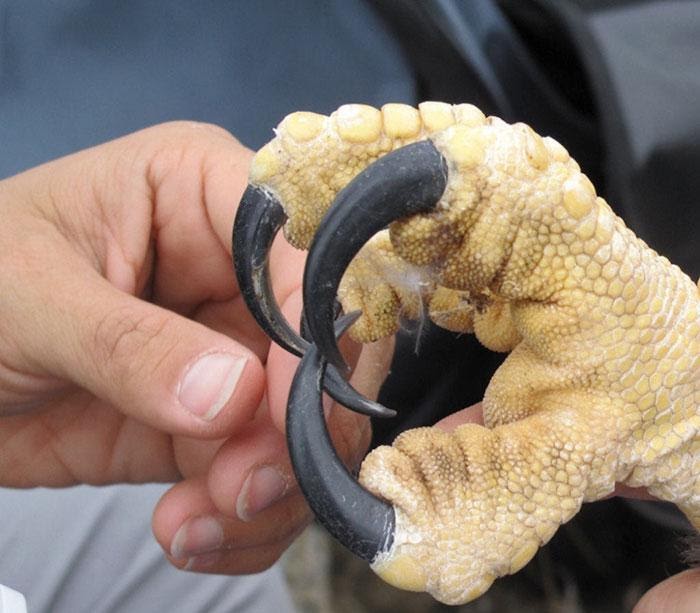
They are amazing hunters and have been known to sit for hours just stalking a prey quietly. When it’s time to swoop in and make a kill, the Harpy eagle can fly up to 50 miles per hour carrying a 17-pound sloth. Their talons are extremely sharp, pointy, and deadly. They bear down on prey and exert massive force from their bodies through their talons, painfully snuffing life out of the animal.
Harpy eagles mate like lovebirds where the male and female stick together for life. Another reason why they are so few left in the world is the wide gap between breeding periods. The breeding season starts in April or May and lasts until December or January, and it happens one every 2 or 3 years. The female Harpy lays one or two large white eggs per clutch. Scientists have noticed that even when a female lays two eggs, she’ll most likely raise only one chick with her partner. The female does most of the incubating, although the male may relieve her occasionally to stretch her legs.
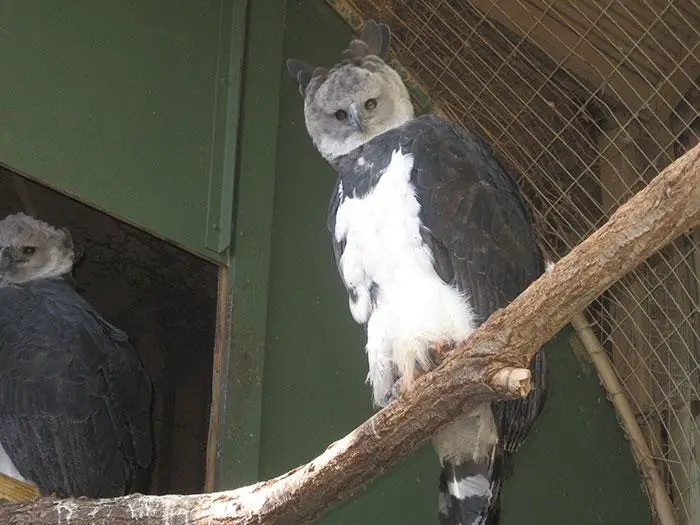
A sad reality for these beautiful creatures
While scientists and conservationists may not be able to estimate the actual numbers of Harpy eagles left in the world, they are certain the birds are largely disappearing. [4] Centuries ago, they populated the forests from Mexico to northern Argentina, but in recent decades, their geographical range has reduced by more than 40 percent. They are now mostly found in Brazil’s portion of the Amazon forest.
While deforestation and poaching are some of the factors contributing to the decline, the natural monogamy and extremely low birth rate of the eagles are the major problems. Since each female will usually lay one egg every 2 to 3 years, only so many chicks can be born every year. Also, some of the ready females may not be fertilized during the breeding periods due to a lack of matured male partners.

Harpy eagles need to be protected because they contribute massively to keeping the ecosystem in check. They are powerful predators for many species and help to manage some of the overgrowing populations by hunting.
Many of them are found in zoos and bird reserves across North and South America. If you ever come across one of these incredibly beautiful birds in the wild, you’d be wise to not provoke or bother it. They don’t anger easily, but an attack from this ferocious bird could leave anyone seriously injured.
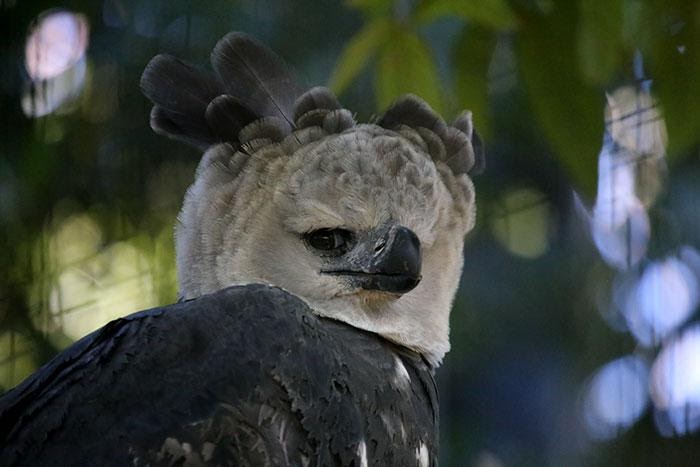

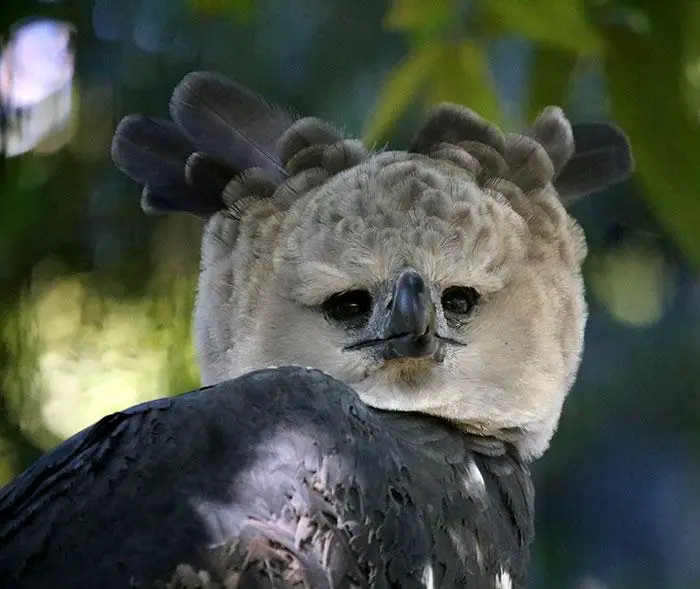


References
- “With a wingspan of 7 feet, the Harpy Eagle looks like a person dressed up in a bird costume.” Ach News. Annie Kin. Retrieved September 18, 2020.
- “Harpy Eagle.” IUCN Red List. Retrieved September 18, 2020.
- “Largest Eagles in the World Are So Big That Their Talons Are Bigger Than Bear Claws.” My Modern Met. Jessica Stewart. Retrieved September 18, 2020.
- “The heroic effort in the Amazon to save one of the world’s largest eagles.” National Geographic. Rachael Nuwer. Retrieved September 18, 2020.

